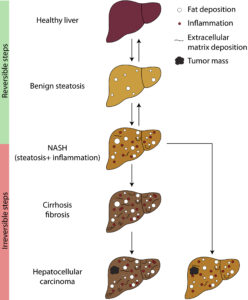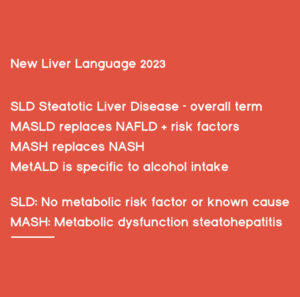What are Normal Liver Lab Values? So many times, you get your lab values delivered in your hospital portal and have no idea how to understand it. By all means, talk to your provider about any concerns. Then, read on for just the facts about labs. Remember that every person, and every liver is different. Liver labs refer to a group of blood tests that evaluate the function and health of the liver.
If you are wondering what are normal liver lab values read on. As a reminder, labs do not always get out of normal range, so other tests can be done. I had normal labs right up until my liver failed and I had bleeding varices, ascites, and jaundice. When interpreted correctly, and with other things like ultrasound, biopsy, Scan or MRI they are useful.
These tests help diagnose liver disease, and help your medical provider monitor the progression of liver conditions. They also give clues about the effects of medications that can hurt or help your liver. Post transplant, we get them checked to watch for rejection of the new organ. Pre-transplant, they can give clues to our liver health and make up part of our MELD Score. Here’s a breakdown of common liver function tests (LFTs) and what they measure and also the norms.
Liver Lab and their Normal Values Top 3
1. Alanine Aminotransferase ALT Normal Range: 7 to 56 units per liter (U/L)
- Purpose: ALT is an enzyme primarily found in the liver. It helps convert proteins into energy for liver cells.
- High Levels: Elevated ALT levels can indicate liver damage or inflammation, often seen in conditions like hepatitis, fatty liver disease, or drug-induced liver injury.
2. Aspartate Aminotransferase AST Normal Range: 10 to 40 units per liter (U/L)
- Purpose: AST is an enzyme found in the liver, heart, and muscles. It helps metabolize amino acids.
- High Levels: High AST levels may indicate liver damage, but because AST is also found in other tissues, elevated levels could also suggest issues with the heart or muscles.
3. Alkaline Phosphatase ALP Normal Range: 44 to 147 units per liter (U/L)
- Purpose: ALP is an enzyme related to the bile ducts. It’s found in the liver, bones, kidneys, and digestive system.
- High Levels: Elevated ALP can indicate blockage of bile ducts, liver disease, or bone disorders.
Liver Enzymes Waste and Proteins
4. Gamma-Glutamyl Transferase GGT Normal Range: 9 to 48 units per liter (U/L)
- Purpose: GGT is an enzyme found in the liver, bile ducts, and pancreas.
- High Levels: High GGT levels can suggest bile duct problems, liver disease, or chronic alcohol use.
5. Total Bilirubin
- Normal Range: 0.1 to 1.2 milligrams per deciliter (mg/dL)
- Direct Bilirubin: 0 to 0.3 mg/dL
- Purpose: Bilirubin is a waste product from the breakdown of red blood cells. The liver processes bilirubin so it can be excreted from the body.
- High Levels: High bilirubin levels can cause jaundice (yellowing of the skin and eyes) and may indicate liver dysfunction, bile duct obstruction, or hemolysis (rapid breakdown of red blood cells).
6. Albumin Normal Range: 3.5 to 5.0 grams per deciliter (g/dl)
- Purpose: Albumin is the main protein made by the liver, which helps keep fluid in your bloodstream and carries hormones, vitamins, and enzymes throughout the body.
- Low Levels: Low albumin levels can suggest liver disease, malnutrition, or other chronic conditions.
Clotting factors and more enzymes
7. Prothrombin Time PT Normal Range 11 to 13/5 seconds or INR 0.8 times 1.1 if not on anticoagulant therapy
- Purpose: PT measures how long it takes blood to clot. The liver produces most of the clotting factors.
- Prolonged PT: A prolonged clotting time can indicate liver dysfunction, as the liver may not be producing enough clotting factors.
8. Lactate Dehydrogenase LDH Normal Range: 122 to 222 units per liter (U/L)
- Purpose: LDH is an enzyme found in almost all of the body’s cells and is released into the bloodstream when cells are damaged.
- High Levels: Elevated LDH can indicate liver damage but is not specific to liver conditions as it is also found in the heart, muscles, and blood cells.
If you have some that are out of range, here are the over arching umbrella of what could be happening. To learn more about ALT and ASL click here.
Interpreting Results:
- Elevated ALT and AST: Often indicate liver cell damage or inflammation.
- Elevated ALP and GGT: Suggest issues with bile flow or bile ducts.
- High Bilirubin: Can be a sign of liver dysfunction, hemolysis, or bile duct obstruction.
- Low Albumin: Might indicate chronic liver disease or malnutrition.
- Prolonged PT: Suggests impaired liver function affecting blood clotting.
Important Notes:What are Normal Liver Lab Values?
- Normal Ranges: Normal ranges for these tests can vary slightly depending on the lab and patient factors like age and gender.
- Context Matters: One abnormal result does not necessarily mean there is a liver problem. Physicians interpret these tests together with a patient’s medical history, symptoms, and other diagnostic tests.
If you have specific results or need more detailed information on a particular test, feel free to ask!
4o







